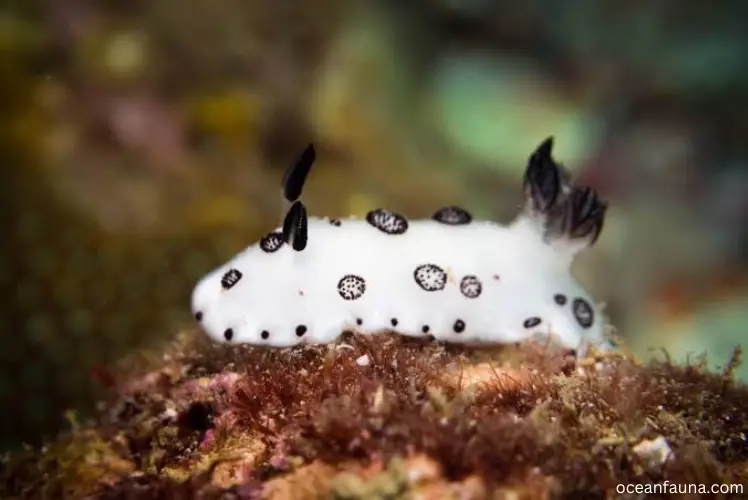Sea bunny is a nickname for the sea slug marine species, Jorunna Parva. It is a small white-spotted black gastropod with two long tail-like appendages that are covered in colorful fur-like tufts. The unique look of this sea creature has made it an internet sensation among marine lovers and enthusiasts.
The best thing about this little sea creature is, it doesn’t have any predators. To know why, read the article till last.
Also, this blog is going to be a detailed discussion about the sea bunny. In this post, I will talk about its habitat, diet, behavior, and all other things that you should know.
About: Sea Bunny
| Category | Information |
| Common Names | Sea Bunny |
| Scientific Name | Jorunna parva |
| Order | Nudibranchia |
| Family | Discodorididae |
| Diet | Feeds on sponges |
| Habitat | Shallow coral reefs and rocky areas |
| Distribution | Indo-Pacific region |
| Size | Up to 2.5 cm |
| Life Expectancy | Up to 1 year |
The Sea Bunny is a type of sea slug found in the waters of the Indo-Pacific region. It is in the family Discodorididae and is known for its unique appearance and behavior.
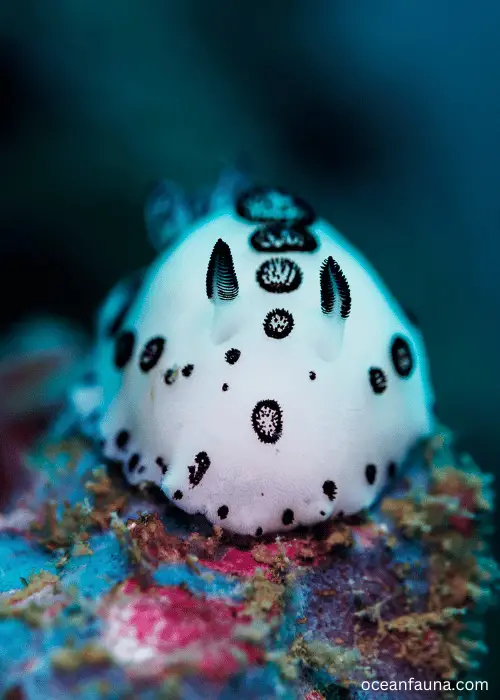
The Sea Bunny gets its name from its fluffy, rabbit-like appearance. Its body is covered in tiny, hair-like projections called caryophyllidia, which give it a soft and fuzzy appearance. These projections are actually sensory structures that help the Sea Bunny detect its surroundings and locate food.
In addition to its cute appearance, the Sea Bunny is also known for its defensive behavior. When threatened, it can release a cloud of toxins from its skin that can deter predators. It is also able to swim using its unique muscular foot, which is located on the underside of its body.
Despite its appearance and peculiar behavior, the Sea Bunny is not categorized as rare or endangered. Nevertheless, we must ensure that this uncommon species remains undisturbed by preserving its habitat and being aware of the consequences of our actions on its ecosystem.
Interesting Facts about Sea Bunny
- Sea bunnies are members of the Nudibranch family, a group of sea slugs known for their vibrant colors and beautiful patterns.
- These slugs can be found in many different colors, including pink, orange, yellow, blue, purple, and even black.
- Despite their cute appearance, these tiny critters are quite toxic and contain a powerful neurotoxin called tetrodotoxin.
- Sea bunnies have an interesting reproductive method where they exchange packets of sperm called spermatophores to fertilize each other’s eggs.
- The lifespan of a sea bunny is typically between a few months and a year.
Anatomy of Sea Bunny
Sea bunnies have unique external and internal anatomical features that help them survive in their aquatic habitat. In this article, we will explore the anatomy of sea bunnies in detail, including their external and internal anatomical systems.
External Anatomy of Sea Bunny
Sea bunnies have a unique appearance, making them stand out from other sea slugs. Their external anatomy includes the following features:
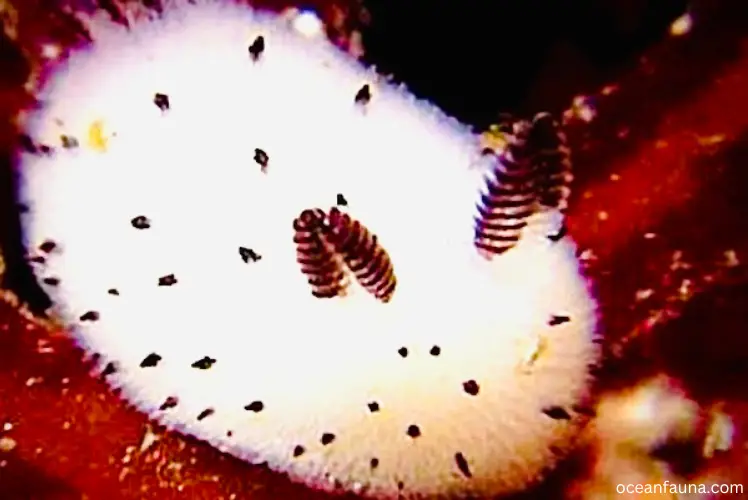
1. Body: Sea bunnies have a soft, elongated body that can grow up to 2.5 centimeters in length. They are covered in tiny bumps called tubercles that give them their characteristic furry appearance.
2. Tentacles: At the front of their body, sea bunnies have two pairs of tentacles. The upper pair is shorter and thicker than the lower pair. These tentacles have sensory cells that help sea bunnies detect chemical and physical changes in the water.
3. Rhinophores: Sea bunnies have two rhinophores on the top of their head that they use to detect smells in the water. These rhinophores are covered in tiny hairs that can pick up chemical cues from their environment.
Internal Anatomy of Sea Bunny
Sea bunnies have a complex internal anatomy that includes several systems that work together to keep them alive. These systems include:
1. Skeletal System: Sea bunnies have a hydrostatic skeleton comprising a network of muscles and fluid-filled cavities. This helps them move quickly through the water without using much energy.
2. Digestive System: Sea bunnies have a simple digestive system that consists of a mouth, esophagus, stomach, and intestine. They feed on sea sponges, algae, and other small organisms found in the water.
3. Circulatory System: Sea bunnies have an open circulatory system that pumps blood throughout their body. Their blood does not have red blood cells but instead contains hemoglobin that helps transport oxygen.
4. Respiratory System: Sea bunnies have a respiratory system consisting of specialized gills. These gills help them absorb oxygen from the water and release carbon dioxide.
5. Nervous System: Sea bunnies have a decentralized nervous system that is spread throughout their body. They have several ganglia or clusters of nerve cells that help them sense their environment and respond to stimuli.
6. Excretory System: Sea bunnies have an excretory system that helps them remove waste from their body. They have specialized nephridia structures that help filter out excess water and toxic compounds.
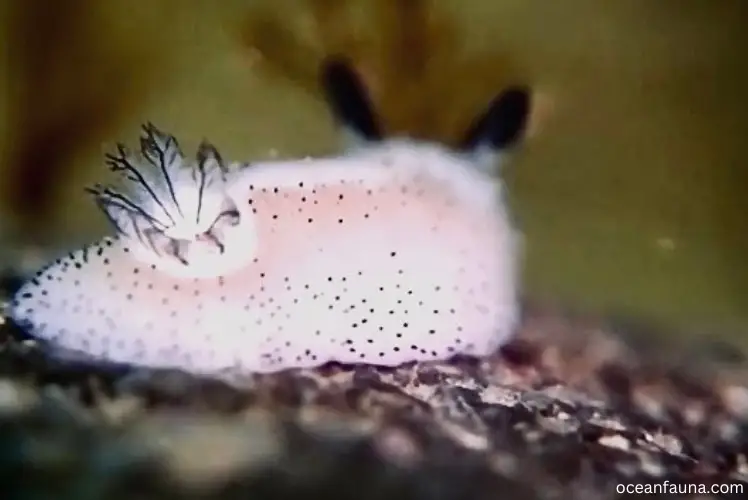
How Big Is a Sea Bunny?
Sea bunnies are small creatures that usually measure less than an inch or 2.5 centimeters in length. These adorable little animals are a type of sea slug known for their fluffy, bunny-like appearance. Despite their cute and cuddly appearance, sea bunnies are very fragile creatures requiring a specific environment to survive.
The size of a sea bunny can vary slightly depending on the species, but most adults are less than an inch in length. They have soft, furry bodies and two small antennae on their head, which they use to navigate and locate food. Their body is often covered in tiny spines or bumps, which help protect them from predators.
Despite their small size, sea bunnies are extremely important to the marine ecosystem. They play a vital role in maintaining healthy ocean habitats by eating algae and other plant material.
What Does a Sea Bunny Eat?
Sea bunnies primarily feed on sea sponges. These soft, squishy creatures make up a large percentage of the sea bunny’s diet and are the main source of nutrition for this marine slug. Sea sponges are low in nutrients but contain a variety of organic compounds that are beneficial to sea bunnies.
In addition to sea sponges, sea bunnies are known to eat algae, seagrass, and other small creatures such as sea slugs or sea snails. They have a varied diet and will eat whatever is available, depending on the season and their location. Sea bunnies are particularly fond of green algae, which provides a good source of both food and shelter.
Interestingly, the sponges that makeup such a large percentage of the sea bunny’s diet are actually subject to scientific study. Researchers are interested in understanding the chemical compounds found in these sponges, as they may have the potential for use in medicine or industry.
By studying the sea bunny’s diet, scientists are able to learn more about the compounds found in these sponges and their potential applications.
How does a sea bunny eat?
Sea bunnies are a type of sea slug that possess unique features, including their ear-like rhinophores, which allow them to detect the scent of their food.
When hunting for algae, sea sponges, and other sea vegetation that they feed on, sea bunnies use their sharp radula teeth to scrape off the surface of the plant. Once the food is captured, the little critters use their muscular feet to move the food toward their mouth, located on their underside.
Interestingly, sea bunnies also have a special way of processing their food. Instead of digesting their meal in their stomach, the food is instead passed through a specialized gland known as the ceras gland.
This gland protects the animal from toxins in the food, allowing it to safely consume and metabolize its meals.
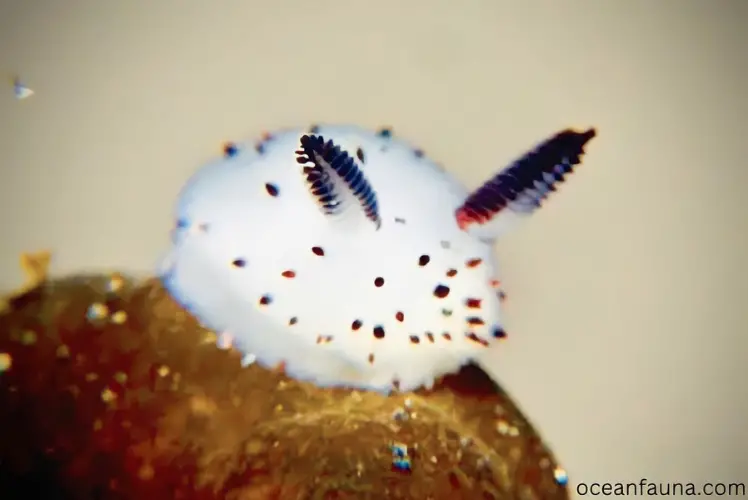
Is There Any Predator of Sea Bunny?
No! Sea bunny slugs do not have any predators due to their toxic defense mechanism. These slugs are members of the dorid nudibranch family, which have the ability to steal toxic chemicals from their food.
When a predator attempts to eat a sea bunny slug, the slug releases a toxic blast that is lethal to the predator. This toxic defense mechanism makes sea bunny slugs an unappealing meal for potential predators.
Where Are Sea Bunnies Found?
Sea bunnies can be found throughout the Indo-Pacific Ocean, ranging from South Africa to the central Pacific. While these fuzzy slugs can be found in shallow waters of oceans around the world, they are mostly found off the coast of Japan, in the Indian Ocean, and off the coasts of the Philippines.
These creatures are typically found in shallow water habitats where they can be seen crawling along rocky surfaces or among the blades of seagrass. They are also known to inhabit sandy bottoms and are able to move within the sediments.
Sea bunnies are found in subtidal zones that are influenced by currents and wave action. They are often found in the intertidal zone, which is the shore area covered and uncovered by the tide. These animals prefer warm water and are commonly found in tropical and subtropical regions.
Sea bunnies, from South Africa to the central Pacific, can be widely encountered throughout the Indo-Pacific region. In particular, these marine organisms have been spotted in abundance around the Philippines, Australia’s Great Barrier Reef, and even India’s Ocean coastlines.
The waters of both Hawaii and California are known for hosting a varied population of sea bunnies too.
Are Sea Bunnies Poisonous?
Yes. Sea bunnies are poisonous. These small and cute slugs are about the size of a fingertip and are found in the waters of the Indo-Pacific region. Despite their harmless appearance, sea bunnies are actually very toxic and contain dangerous chemicals in their bodies that are meant to deter predators.
The toxin found in these slugs is called tetrodotoxin, which is also found in pufferfish and some other species of marine animals. Tetrodotoxin is a potent neurotoxin that affects the functioning of the nervous system and can cause paralysis and even death in some cases.
Despite their toxicity, sea bunnies have no natural predators. Also, they have developed certain adaptations to protect themselves. For example, sea bunnies have a unique defense mechanism where they release a sticky and foul-smelling substance when threatened.
Some species of sea bunnies also have sharp spines on their bodies that make them less appetizing to predators.
What Is the Lifespan of a Sea Bunny?
Sea bunny slugs have a relatively short lifespan, usually only between a few months and a year. These soft-bodied creatures are endemic to the ocean floor and feed primarily on sea sponges and algae, which may affect their lifespan.
Because they typically live solitary lives hidden in crevices and under rocks, mating can be a rare and fleeting event for sea bunnies.
While few studies have been done on the exact lifespan of sea bunny slugs, it is believed that a combination of factors such as environmental conditions, genetic factors, and predatory pressure may play a role in their relatively short lifespan.
Aside from their short lifespan, sea bunny slugs are fascinating creatures to behold. Known for their fluffy, bunny-like appearance and vibrant colors, they are popular with divers and marine enthusiasts alike.
Their soft fur-like appendages, called cerata, are covered in tiny branching structures called papillae. These papillae are important for gas exchange and can act as a form of camouflage, as they often match the surrounding algae.
How Do Sea Bunnies Reproduce?
Sea bunnies are a species of sea slug that reproduce in a unique way. As hermaphrodites, they have both male and female reproductive organs, allowing them to mate with any other sea bunny they encounter.
During mating, they exchange packets of sperm called spermatophores, which they use to fertilize each other’s eggs.
After fertilization, the sea bunny lays a cluster of eggs that attaches to a solid surface, such as a rock or the side of an aquarium. The eggs develop over several days and can hatch into larvae that look like small sea slugs depending on the temperature and other environmental conditions.
Interestingly, because sea bunnies are both mother and father to their offspring, their offspring are considered direct siblings. This means that a sea bunny may both lay eggs and fertilize another sea bunny’s eggs, resulting in its offspring having half-siblings that share the same mother and father.
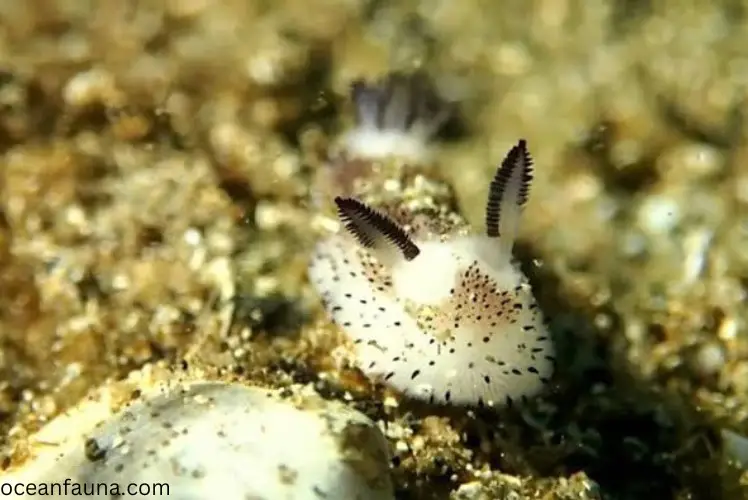
FAQs
Are sea bunnies edible?
Sea bunnies are not edible. Although these adorable critters are tempting to eat, they are highly toxic. In fact, they produce a powerful toxin called tetrodotoxin, which can cause paralysis and death in their predators.
This toxin is so potent that it is sometimes 1,200 times more lethal than cyanide. Due to this sheer toxicity, humans must not eat them under any circumstances. Even a tiny amount of tetrodotoxin can cause numbness, respiratory distress, and even death.
Despite their cozy and cute appearance with poufy bunny-like ears and fluffy white fur-like protrusions, these small creatures are perilous.
In general, eating any marine critter that you are not 100% sure is safe for human consumption is not recommended, and sea bunnies are no exception.
Are sea bunnies rare?
Sea bunnies are not considered rare in the marine world. In fact, they are quite common and found in numerous marine habitats, including the Pacific and Indian Oceans.
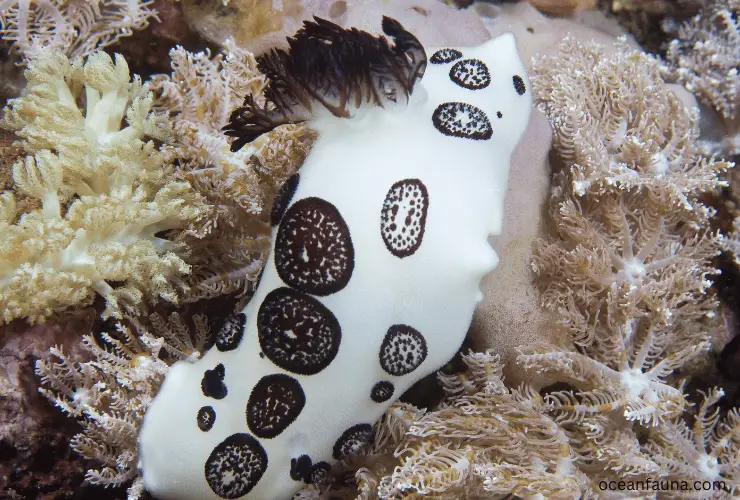
Although they look charming, there is still much to discover regarding their conservation status. To comprehend their ecological impact, additional research must be conducted.
Nevertheless, the large numbers of these creatures imply that they have a considerable role in maintaining marine ecosystems.
These sea slugs possess several distinctive traits, such as their unique soft and fluffy appearance and vivid coloration, which help them to ward off predators. Moreover, they feed on sponges and other invertebrates, making them an essential part of the marine food chain.
Do sea bunnies have eyes?
No, sea bunnies do not have eyes or any visual system. They belong to a group of sea slugs called nudibranchs with no eyes or eye-like structures.
Instead, sea bunnies rely on their ‘ears’ or rhinophores to detect chemical compounds in their surroundings. These organs are located on the top of their heads and contain sensory cells that can detect various chemicals in the water, such as food or potential mates.
Sea bunnies’ ‘fur’ or cerata, which covers their bodies, assists in their navigation by providing sensory information about their surroundings. The cerata contain tiny hair-like structures that can sense water currents and vibrations in the environment.
Sea bunnies, though lacking vision, are remarkably adapted to their underwater environment and have developed several innovative ways to traverse the depths and find sustenance.
Are sea bunnies good pets?
Sea bunnies may appear cute and attractive, but they are not suitable for keeping as pets. They have a short lifespan, so they will not provide long-lasting companionship.
Furthermore, marine authorities have not approved their captivity as pets, which should be a clear indication that they require special care and attention.
Sea bunnies are delicate creatures that require specific conditions to thrive in the wild. They cannot sustain their health and well-being in a captive environment, which is why it’s not appropriate to keep them as pets.
Additionally, some species of sea bunnies are toxic and can release harmful chemicals, posing a danger to other marine life and humans alike.
Remember that owning a pet comes with significant responsibilities that cannot be taken lightly. Providing a suitable and healthy habitat, proper nutrition, and care for an animal’s physical and mental well-being is essential. Sea bunnies are not easy to care for as they require specific food and water conditions, and their lifespan is too short for them to make good pets.
Conclusion
Now you have a detailed knowledge of sea bunny, including their appearance, habitat, behavior, and why they are not suitable for keeping as pets. Sea bunnies may look cute and cuddly but can cause serious harm to humans and other marine life if mishandled or eaten.
If you need any further information about this beautiful creature, put your question in the comment.

